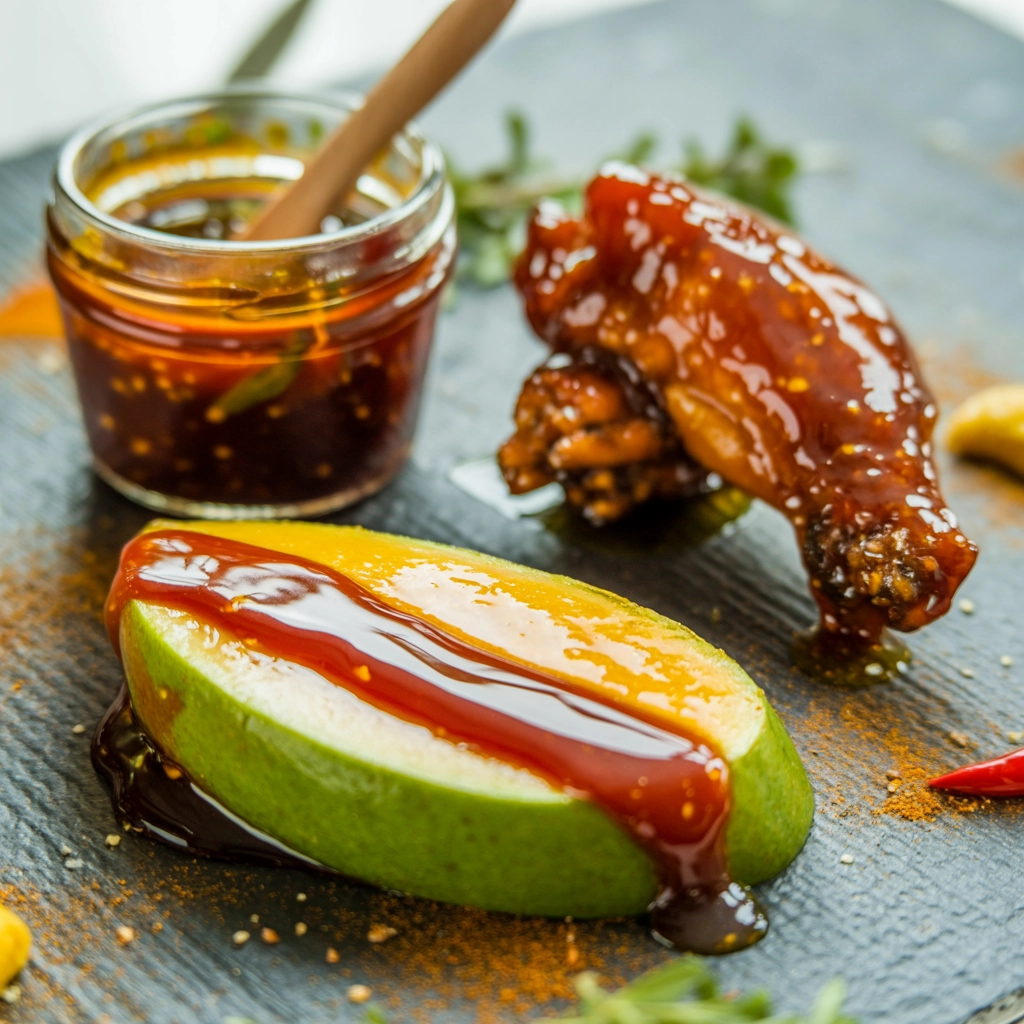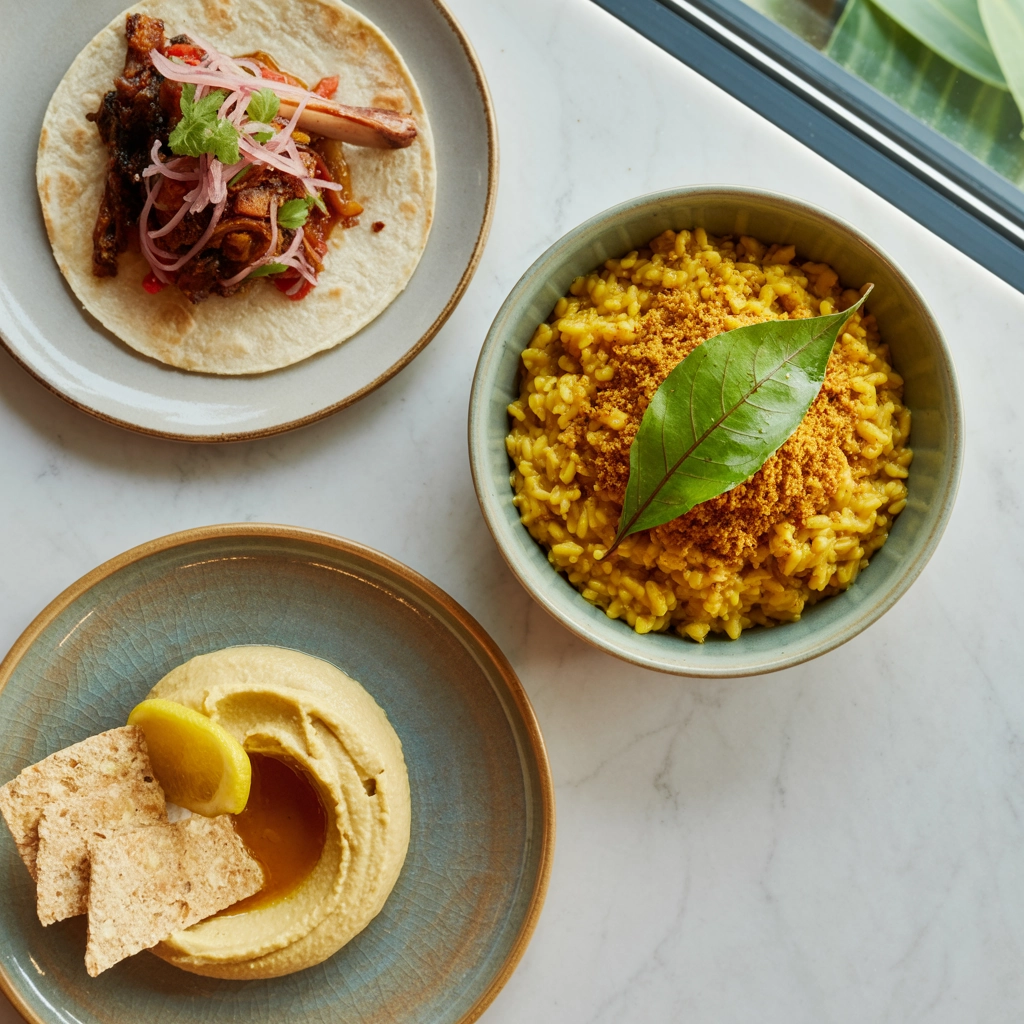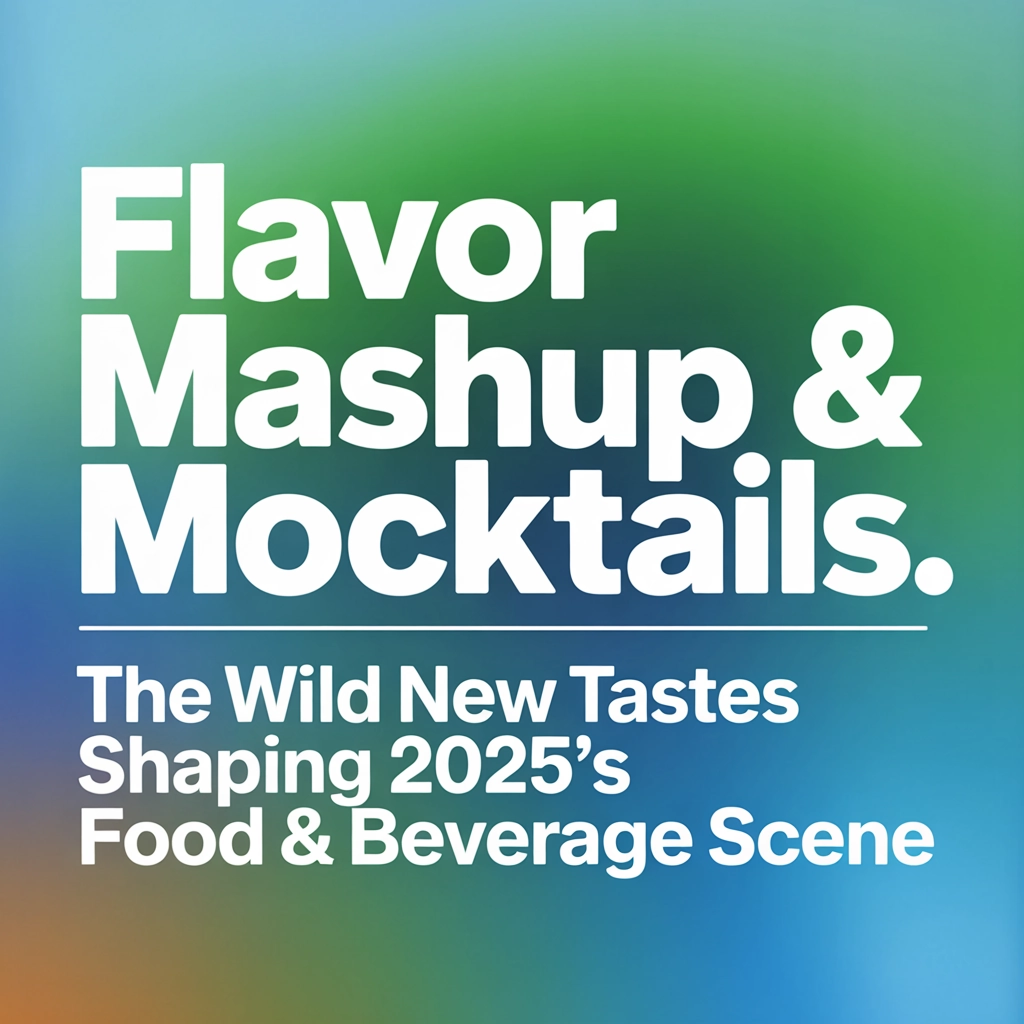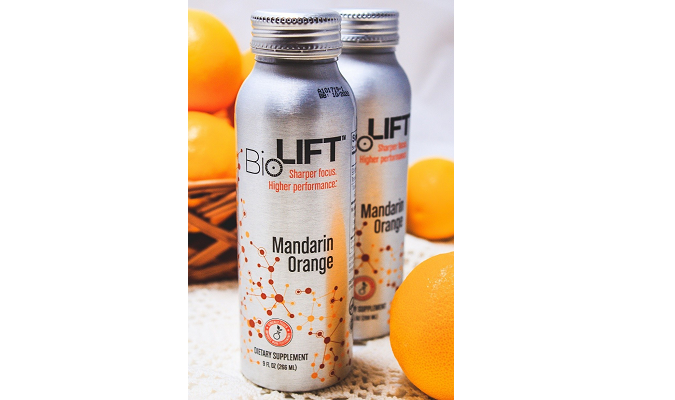The Flavor Revolution Is Here
If there's one thing that's certain in the food and beverage industry, it's that flavor innovation never sleeps. As we dive deeper into 2025, we're witnessing one of the most experimental and boundary-pushing eras in culinary history. Gone are the days when a simple fusion of two cuisines felt revolutionary. Today's consumers are seeking multi-dimensional flavor experiences that challenge their palates and create memorable sensory journeys.
The most successful operators are those embracing this brave new world of flavor mashups and sophisticated mocktails. From fast-casual concepts to fine dining establishments, the industry's innovators are discovering that these new flavor frontiers aren't just trending—they're transforming the entire landscape of what we eat and drink.
Sweet Meets Heat & Sour: The Triple Threat
Perhaps the most dominant flavor trend of 2025 is the triumvirate of sweet, heat, and sour in surprising new combinations. This isn't your standard sweet-and-sour sauce from the takeout spot around the corner—these are complex, layered profiles that dance across the palate.
"We're seeing consumers actively seeking out that next-level flavor experience," explains Chef Darren Chen of the acclaimed Fusion Forward in Chicago. "The combination of sweet fruit notes with unexpected heat and tangy acidity creates a sensory rollercoaster that keeps guests coming back."
Some of the standout combinations making waves include:
-
Tart Green Mango Chamoy: Unripe mango's tartness meets the complex sweet-sour-spicy profile of chamoy sauce, often appearing in everything from cocktail rims to dessert drizzles.
-
Tamarind Chili Jams: The sticky-sweet-sour nature of tamarind paired with the progressive heat of chilis creates a condiment that's equally at home on charcuterie boards and as a glaze for proteins.
-
Calamansi-Honey Glazes: This Filipino citrus brings bright acidity that, when mellowed with honey and spiked with gentle heat, becomes an addictive coating for chicken wings, seafood, and even vegetable dishes.

These combinations aren't just appearing on plates—they're finding their way into the beverage world as well. At Octant Evora's new Enoteca wine haven, beverage director Maria Santos has introduced a non-alcoholic spritz featuring tamarind, chili-infused simple syrup, and a splash of citrus that's becoming the talk of Portugal's Alentejo region.
The Primal Appeal: Charred & Fire-Kissed Everything
In stark contrast to laboratory-precise molecular gastronomy that dominated previous decades, 2025 has seen a pronounced shift toward primal cooking methods—specifically, the distinctive flavors imparted by fire, smoke, and char.
"There's something viscerally satisfying about flame-kissed foods," notes James Rivera, culinary director at Sazerac Company's new Hawks Rock Distillery. "We're incorporating these elements not just in our food pairings but in the flavor development of our spirits as well."
The most innovative applications include:
-
Grill-Scraped Sauces: Innovative chefs are literally scraping the caramelized bits from grill grates after cooking vegetables and fruits, incorporating these flavor bombs into compound butters and finishing sauces.
-
Flame-Seared Marinades: Pre-charring marinade ingredients before blending them creates deep, complex flavors that penetrate proteins—particularly popular for plant-based alternatives that benefit from added depth.
-
Charcoal-Infused Butter: The subtle earthiness of food-grade activated charcoal folded into cultured butter creates a striking black spread that brings gentle smokiness to bread service and finished dishes alike.
The appeal of these techniques lies in their authenticity. "Consumers can taste the difference between artificial smoke flavor and the real deal," explains Rivera. "There's no shortcut to the complexity that actual fire creates."
Global Fusion 2.0: Beyond Borders
While fusion cuisine has been around for decades, what we're seeing in 2025 goes beyond simply combining two distinct culinary traditions. Today's most exciting flavor innovations draw from multiple global influences simultaneously, creating dishes that defy easy categorization.
"We're not just making Korean tacos anymore," says Chef Michael Freeman, recently appointed culinary director at Paso Robles. "We're creating dishes that might incorporate four or five different cultural influences in a single bite."
Some of the most successful mashups include:
-
Mexican-Tamarind BBQ: The tangy depth of tamarind, typically associated with Southeast Asian cuisines, brings new dimension to Mexican-style barbacoa preparations.
-
Indo-Italian Mashups: The spice complexity of Indian cuisine meets the simplicity of Italian pasta tradition, with dishes like turmeric-saffron risotto with curry leaf gremolata gaining cult followings.
-
Mediterranean-Japanese Hybrids: The clean, umami-rich profiles of Japanese cuisine find natural partners in Mediterranean ingredients, with combinations like miso-tahini and yuzu-preserved lemon appearing on menus nationwide.

These cultural crossroads are creating entirely new categories of flavor that chefs are eagerly exploring. At Six Senses Hotels and Resorts, culinary teams across their expanding portfolio are embracing these mashups as signatures that differentiate their dining experiences from competitors.
The Mocktail Renaissance: Beyond Soda Water
Perhaps nowhere is flavor innovation more evident than in the exploding category of non-alcoholic beverages. Far from the afterthought mocktails of years past, today's alcohol-free options often outshine their spirited counterparts in complexity and creativity.
"The zero-proof movement has completely transformed our beverage program," explains Madison Carter, beverage director at Sonesta Fort Lauderdale Beach. "Our non-alcoholic options now account for nearly 40% of our beverage revenue, up from less than 10% just three years ago."
Leading the charge are:
-
Fermented Complexity: House-made kombuchas, tepaches, and lacto-fermented fruit sodas bring the depth and subtle funk previously only available in alcoholic options.
-
Botanical Infusions: Distilled non-alcoholic "spirits" featuring complex botanical blends that mimic the mouthfeel and layered flavors of traditional spirits without the alcohol.
-
Culinary Techniques: Smoking, charring, and even fat-washing techniques borrowed from traditional cocktail preparation elevate mocktails beyond simple juice combinations.
The sophisticated presentations match the complex flavors, with specialty glassware, elaborate garnishes, and tableside preparation adding to the experience. "Our guests aren't just accepting these options—they're specifically requesting them," adds Carter.
Functional Flavors: Where Wellness Meets Indulgence
The intersection of flavor innovation and functional benefits represents one of the most promising frontiers for product development. Consumers no longer accept the false dichotomy between great taste and health benefits—they demand both.
"The most successful new product launches we're seeing incorporate functional benefits without compromising on flavor experience," notes Sarah Patel, ingredient innovation specialist at Glanbia Nutritionals. "It's not enough to add adaptogens or probiotics—the delivery system needs to be craveable."

Winning combinations include:
-
Watermelon-Chili: The hydration benefits of watermelon paired with metabolism-boosting chili create beverages and snacks that deliver on both flavor and function.
-
Blueberry-Basil: Antioxidant-rich blueberries find harmony with the anti-inflammatory properties of basil in everything from breakfast bowls to functional beverages.
-
Mushroom-Cacao: The cognitive benefits of functional mushrooms like lion's mane paired with the mood-enhancing properties of cacao create indulgent yet beneficial treats.
This trend is particularly evident in the functional sweets and desserts category, where manufacturers are finding innovative ways to deliver benefits without sacrificing the indulgent experience consumers expect.
How Technology Is Accelerating Flavor Innovation
Behind many of these flavor breakthroughs is an increasing reliance on technology to identify promising combinations and predict consumer acceptance. AI and machine learning are revolutionizing how flavor houses and R&D teams approach new product development.
"We're able to analyze flavor compounds and predict successful pairings that might never have occurred to human developers," explains Dr. Leila Wong, flavor scientist at International Flavors & Fragrances. "The most successful companies are combining this computational approach with traditional sensory evaluation to create truly breakthrough products."
This technology-enhanced approach to flavor development is particularly valuable for restaurants and manufacturers facing ongoing supply chain challenges and the need to remain nimble in response to shifting consumer preferences.
The Business Case for Bold Flavor Innovation
For operators considering these flavor frontiers, the business case is compelling. Venues embracing these trends report higher check averages, increased social media engagement, and stronger customer loyalty metrics.
"Our social media mentions increased by 300% when we introduced our fermented fruit-vinegar soda program," reports Taylor Jackson, marketing director for a fast-growing regional restaurant group. "But more importantly, our repeat visitation numbers have shown that these unique flavor experiences are driving real loyalty."
For product manufacturers, distinctive flavor combinations create powerful differentiation in crowded categories. The teams at Taylor Farms and BG Foods have found that bold flavor innovations can revitalize mature product lines and create entirely new consumption occasions.
Embracing the Flavor Future
For food and beverage professionals looking to capitalize on these trends, the path forward requires both boldness and strategic thinking. Consider these action steps:
-
Start with signature items: Rather than overhauling your entire menu or product line, identify opportunities to introduce these flavor innovations in signature offerings where they'll receive the most attention.
-
Tell the story: The most successful flavor innovations come with compelling narratives about their inspiration and development.
-
Train thoroughly: Ensure your team can confidently explain these new flavor experiences to customers who may be encountering them for the first time.
-
Gather feedback relentlessly: Use both formal and informal channels to understand how consumers are responding to these innovations, and be prepared to iterate quickly.
As we look toward the remainder of 2025 and beyond, one thing is clear: the pace of flavor innovation shows no signs of slowing. The operators and manufacturers who embrace these bold new combinations now will be well-positioned to lead rather than follow as consumer palates continue to evolve.
The question isn't whether these flavor frontiers represent the future—it's how quickly and confidently you'll stake your claim in this exciting new territory.
What flavor combinations are you experimenting with in your operation? Share your experiences in the comments below or reach out directly to discuss how Food & Beverage Magazine can help spotlight your innovations.
Written by Michael Politz, Author of Guide to Restaurant Success: The Proven Process for Starting Any Restaurant Business From Scratch to Success (ISBN: 978-1-119-66896-1), Founder of Food & Beverage Magazine, the leading online magazine and resource in the industry. Designer of the Bluetooth logo and recognized in Entrepreneur Magazine's "Top 40 Under 40" for founding American Wholesale Floral. Politz is also the founder of the Proof Awards and the CPG Awards and a partner in numerous consumer brands across the food and beverage sector.






